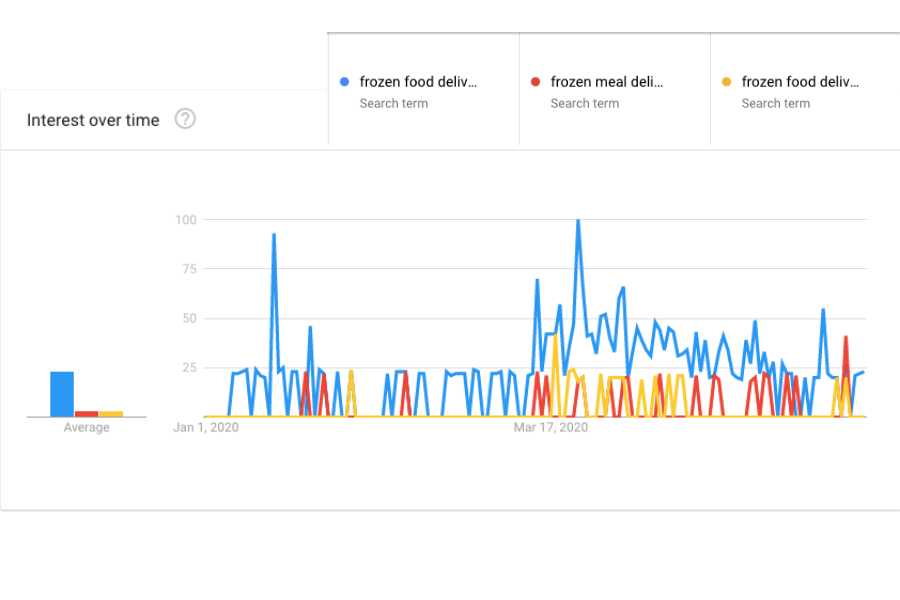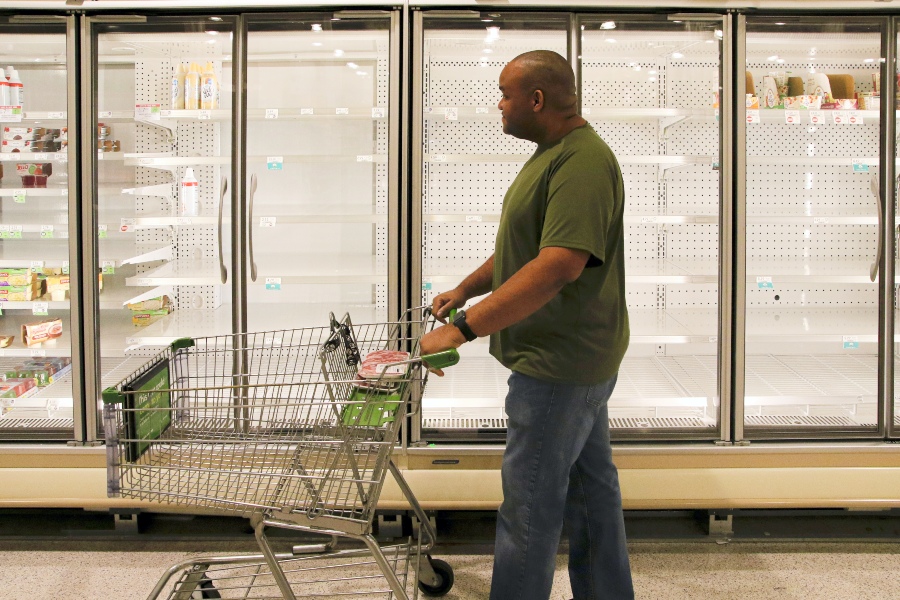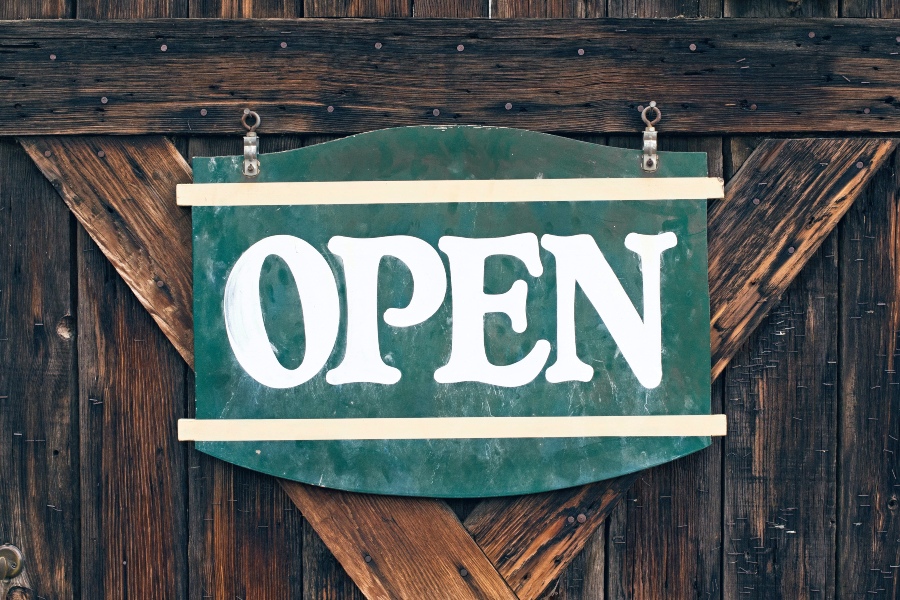Food delivery has become a hot topic, particularly in light of lockdown, reduced mobility and the increased run on food supplies. But what of frozen food delivery specifically?
According to Google Trends, in the UK, interest in frozen food delivery and frozen meal delivery services spiked in interest in the latter half of March 2020, around when the news of COVID-19 in the UK was at its peak.

The highest peak for frozen food delivery occurred on 23rd March 2020, the first day of the UK’s lockdown. This isn’t surprising as many people began to stockpile and the long-term storability of frozen foods obviously had an appeal for those worried about potential food shortages – which did not come to pass in the end.
Demand for frozen meal delivery and frozen food delivery services reduced over April and May to the same levels as earlier in 2020. As we wait to see when lockdown will be lifted, what does this trend for frozen foods say about the sector as a whole? Is this a flash in the pan boost in interest or a turning point for frozen food in the delivery market?
Demand For Frozen Food Was Growing Before COVID-19
Frozen food has been on the rise in the last few years. Food Manufacture magazine reported in February 2019 that 2018 was one of the biggest years for frozen food, and showed that there was a 4% year on year increase in demand. This might not sound like much but it is significant in terms of business growth and, specifically, it is worth noting because this was higher than any other retail food category.
Compared to frozen food’s 4% growth, ambient food buying grew by 3.2% and chilled food purchases increased by 2.1%. The demand for frozen food is largely invisible to the average consumer because by its nature you are storing the food before consuming. You might see someone buying a supermarket sandwich or buying from a busy food stall, giving you an idea of how popular they are by the availability or queues. Unless you are keeping a watchful eye on Iceland’s freezers, you are unlikely to have a good idea of the demand for frozen foods.
Why Has Demand For Frozen Food Been Increasing?
To understand why frozen food is getting a larger slice of the consumer pie, we have to look at who is buying and why.
Food waste is a prime concern for many conscientious eaters, as is customisable diets to suit vegan foodies, fitness fanatics and those with intolerances. Being mindful of what we are eating and how is then met with a desire for simplicity and ease. People want to be able to have a tasty, healthy or diet-specific meal and be able to have it ready quickly.
This want of quality, convenience and a ‘green’ perspective on food has led to an increase in food delivery from health takeaways and meal kits that come with the exact amount of the ingredients you need for each person. These work for people with busy lifestyles, those who want to be more environmentally friendly – given the current climate crisis this is an increasing number of people – and those who simply want to be at the forefront of food trends.
Frozen food is the third leg, bridging the gap between the custom do-it-yourself meals of recipe boxes and the do-nothing of hot food delivery. In fact, frozen food lasts longer in storage, meaning it can be seamlessly worked into weekly meal plans whenever convenient, or kept as a last resort for those long days or when you can’t get out to a supermarket due to long times and limited time, or because you are immunocompromised.
Frozen Food: Delivery & Stockpiling During COVID-19

As demonstrated in the Google Trends graph above, interest in frozen food spiked once lockdown was announced. This was seen in supermarkets up and down the country, leading to a boost in sales for frozen food companies. However, this also created an issue. Though many customers were buying as part of a weekly shop, many more were stockpiling, clearing out freezers every day for weeks. This led to gaps in availability of many products, similar to the empty shelves that gained news traction when there was a run on dried and tinned foods, then toilet paper.
COVID-19 also affected the workers who prepared frozen meals and foods. Despite some countries reopening parts of their non-essential stores, the virus is still closing down plants and workers in food warehouses and manufacturing plants have been unable to work. Keeping up with the demand for frozen meals and food delivery has been tough for the sector, especially while ensuring that key workers are kept safe.
In more positive news, frozen meal delivery has been a lifeline for many stuck indoors, either because they are elderly and self-isolating, are immunocompromised or simply unable to get to supermarkets due to a disability. One frozen food specialist, Wiltshire Farm Foods, was reported to be a ‘lifeline’ for its customers during the pandemimic, providing healthy and enjoyable meals for those who aren’t able to get supermarket delivery slots.
An increase in demand for frozen food delivery has also been an opportunity for the business minded and financially secure, with some companies pivoting into frozen food. One frozen bakery company, Toastyfresh, has partnered with Delice de France to deliver frozen food, focusing on their French-style bakery products. Meanwhile many food businesses, such as restaurants and cafes, have switched to food delivery to stay in business and we could see more moving into frozen meal delivery as well.
What Will Happen To Frozen Food Meal Delivery After Lockdown Ends?

While it may appear from the above that frozen food delivery is doing well, it’s important to remember that these are only a few cases and don’t reflect the numerous food suppliers who are struggling right now. Small businesses up and down the country have had to lay-off staff, furlough others and those businesses unable to figure out how to pivot have closed. There is a huge amount of potential in the frozen food delivery market and certainly a demand, but who provides those frozen meals will come down to which businesses are able to survive.
When we think about frozen meals, we think of the end product and the seller. But what if the seller isn’t the manufacturer, who is separated from the ingredient supplier. There is a chain at work and not all of those in the pipeline are getting the funds they need to keep going. The British Frozen Food Federation (BFFF) has called for retailers to share financial aid with those down the line. While home freezers are being stocked and suppliers struggle to keep up with demand, those selling to pubs, restaurants, etc., have seen their business vanish.
Then there is the impact of Brexit to consider. While the UK has now left the European Union, as of 31 January 2020, the resultant changes in costs for imported and exported foods are still being worked out. The full effect this has on the supply chain and availability of products has yet to be felt. Like with the surge in demand for frozen meals during COVID-19 leading to product gaps in stores, the food industry as a whole could experience gaps in production due to key ingredients no longer available in the quantities demanded by consumers.
So what happens next? Meal kit delivery seems to be on the rise and, given frozen foods were in growing demand before COVID-19, it’s a fair expectation that the sector will continue to grow. Consumers are going to want to get back to ‘normal’ as much as possible and that means going back to the food consumption practices they enjoyed before.
There are no certainties and we will have to wait and see what happens in the UK once lockdown is lifted. For the frozen food sector’s sake, we have to hope that demand continues and we see UK food businesses thrive despite difficult circumstances.